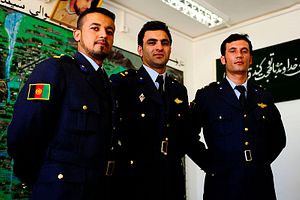The Afghan National Security Forces will be without its own fixed-wing close air support this fighting season, according to the commander of U.S. Forces in Afghanistan, Gen. John F. Campbell, who testified last week in front of the U.S. House of Representatives Armed Services Committee on the current situation in Afghanistan.
Gen. Campbell noted that the first out of 20 Embraer EMB 314 Super Tucanos, aka A-29s, will be delivered by the end of 2015. The Brazilian-made A-29 Super Tucano is a turboprop aircraft specifically designed for counter-insurgency operations and can be equipped with a wide array of bombs (including precision guided munitions) and machine guns. One hour of flying time usually only costs $1,000, a big cost advantage for the cash-strapped Afghan Air Force.
The United States Air Force, responsible for the training of Afghan pilots, allocated $427 million for the A-29 Super Tucano planes. Only a handful of aircraft will arrive in 2016, with the majority being delivered in 2017 and 2018, according to Campbell. “In hindsight, I wish we would’ve started that years ago,” he said, yet “we are where we are.” “Quite frankly, we can’t get it out there quick enough for them,” he stated when talking about the controversial aircraft procurement process.
Afghan forces will still have some indigenous close air support during this year’s battle with insurgent forces. “We’re working MD530s, which is a ‘Little Bird’ that has two .50-caliber machine guns on the sides,” Campbell told the Armed Services Committee. The ANSF are also using Mi-24/35 attack helicopters but they are rarely operational.
In his testimony Gen. Campbell emphasized that aviation is one of the most critical capability gaps of the Afghan National Security Forces during this year’s fighting season, set to begin in a few weeks. During the hearing Campbell noted the overreliance of Afghan forces on U.S. close air support.
The most often heard request from Afghan commanders is “I need close air support, I need close air support,” he noted, according to military.com.
“What I tell the Afghans is, ‘Don’t plan your operations wholly dependent on close air support. You have the capability. The Taliban doesn’t have close air support, the Taliban doesn’t have up-armored Humvees, the Taliban doesn’t have D-30 howitzers.’ So a part of it is just leadership, again. So when I get a request that says, ‘Hey, I need close air support,’ the first thing I ask them is, ‘Do you have a Quick Reaction Force out there? Have you fired your mortars? Have you fired your artillery? Have you taken your Mi-17 (Russian helicopters) that have forward-firing machine guns on them? You have a few Mi-35s. Have you used them?’”
As I stated here, Campbell is convinced that the Taliban will not be able to defeat the ANSF on Afghanistan’s battlefields in the near future. However, there is still a tough fight ahead in which air power will be badly needed.

































